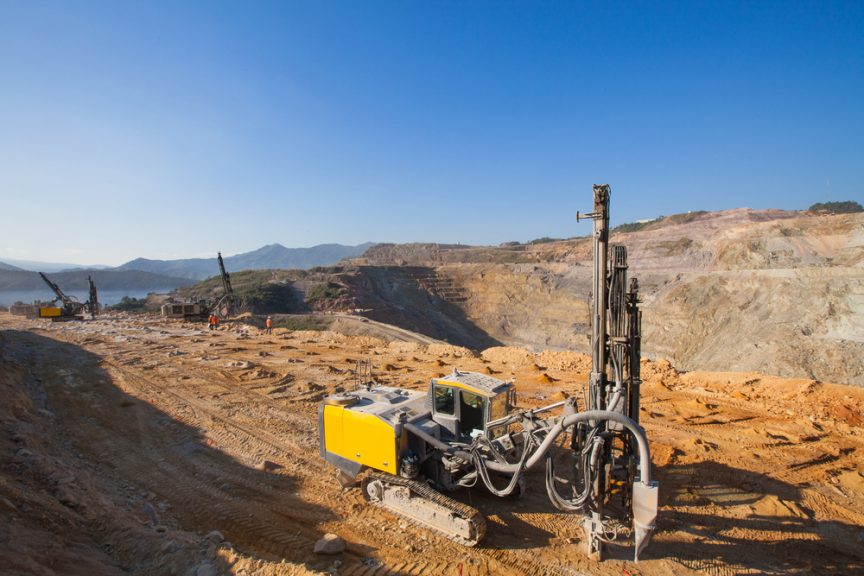Mining technologies have advanced rapidly in recent years and safety regulations have at times struggled to keep up. Here are a few policies mine operators can enforce to keep workers safe in modernized working environments.
Mining businesses are hardly sluggish when it comes to adopting new tech. Developing technology is bringing unprecedented levels of efficiency to mining operations all over the world while improving worker safety. However, government policy tends to move a bit slower than private enterprise. Many of the Mine Safety and Health Administration (MSHA) regulations in place today remain unchanged since first being implemented in the 1970s.
Without new regulations to account for recent advances in mining technology, it’s up to mine operators themselves to ensure the safety and health of their workers when it comes to using state-of-the-art equipment and devices. Here are just a few of the tech breakthroughs that have made their way onto mining sites in the past decades and some pointers to help operators ensure this technology doesn’t pose a safety risk to their employees.
Autonomous Equipment
Some of the world’s biggest mining operations have come to rely on automatic mining equipment and industry giant Rio Tinto offers probably the best example of this trend. Since launching its “Mine of the Future” initiative in 2008, the company has introduced dozens of autonomous drills and trucks to their worksites. Driverless trucks haul waste material and workers control up to four autonomous drills from remote consoles at once. All the while, IoT technology is collecting data and using predictive analytics to improve efficiency and worker safety.
Current MSHA regulations stipulate that mobile equipment not be left unattended unless it’s left in park and that drills should be attended at all times. While the language seems to altogether prohibit the use of automated equipment, the fact is that these regulations are just outdated. MSHA has ruled in the past that equipment being remotely controlled by a worker counts as being “attended.” Autonomous vehicles being monitored by mine staff are also technically considered to be attended.
Mobile Phones and Tablets
Despite the fact that a significant number of traffic accidents occur while talking on the phone or texting, MSHA regulations say little to nothing about using smartphones while operating heavy machinery. Given how integral these devices have become to daily work on mining facilities, it’s crucial that operators do something to limit their use.
It’s increasingly common for mining operations to forbid workers from using smartphones while behind the wheel of vehicles or behind the control panel of a piece of heavy equipment. You could reasonably allow workers to use their smartphone or tablet for work purposes when vehicles are safely parked, but anything beyond that puts themselves and their coworkers at risk.
High-Pressure Injection Injuries
High-pressure injection injuries occur when some foreign substance like oil, water, grease, or diesel fuel is forced into the body. It’s a surprisingly common source of workplace injuries in the mining industry and typically results from accidents with pressure washers, grease guns, paint sprayers and similar equipment.
Though most high-pressure equipment is considerably older than the digital technologies now common on mining worksites, they are predated by most existing regulations. Should such an injury occur on-site, MSHA will likely either cite the operator using their standard concerning dangerous equipment defects. Therefore it is critical that all pressurized equipment is in peak operating condition.
Remaining Compliant with Air Emission Regulations
While safety standards covering new mining technology are still in the works, there’s one area that regulatory agencies like MSHA have had covered for some time now: airborne dust on worksites. As a result, mining companies need to put innovative dust control products and strategies to work on mine haul and access roads to prevent PM10 and PM2.5 particles from being kicked up by heavy mining equipment and potentially impacting the health of workers.
Many mining operations use processes like continual watering to meet their dust control needs, but the truth is that watering is only a temporary solution that slowly destroys the structure of your roads. Water washes out the fines that make up your road’s surface, leading to potholing and washboarding. This in turn can lead to bumpy driving conditions, which are commonly the subject of workers’ comp suits regarding back strain.
Midwest Industrial Supply, Inc. can provide your company with a custom dust control program that will suppress dust while protecting the integrity of your haul and access roads.
We’ve been supplying dust control programs tailored to the individual specifications of companies in the mining industry for over 40 years, and have a long track record of helping these businesses decrease emissions while reducing the need for costly road maintenance. Patented dust control products like EK35® keep fines locked into the road surface, preventing PM10 and PM2.5 emissions from escaping.
It can be hard to keep pace with the development of new technology and understand what needs to be done to keep workers safe on modern worksites. But there’s one thing you can be sure of — if you need to protect workers from airborne dust, Midwest is the most qualified partner to help you do it.

